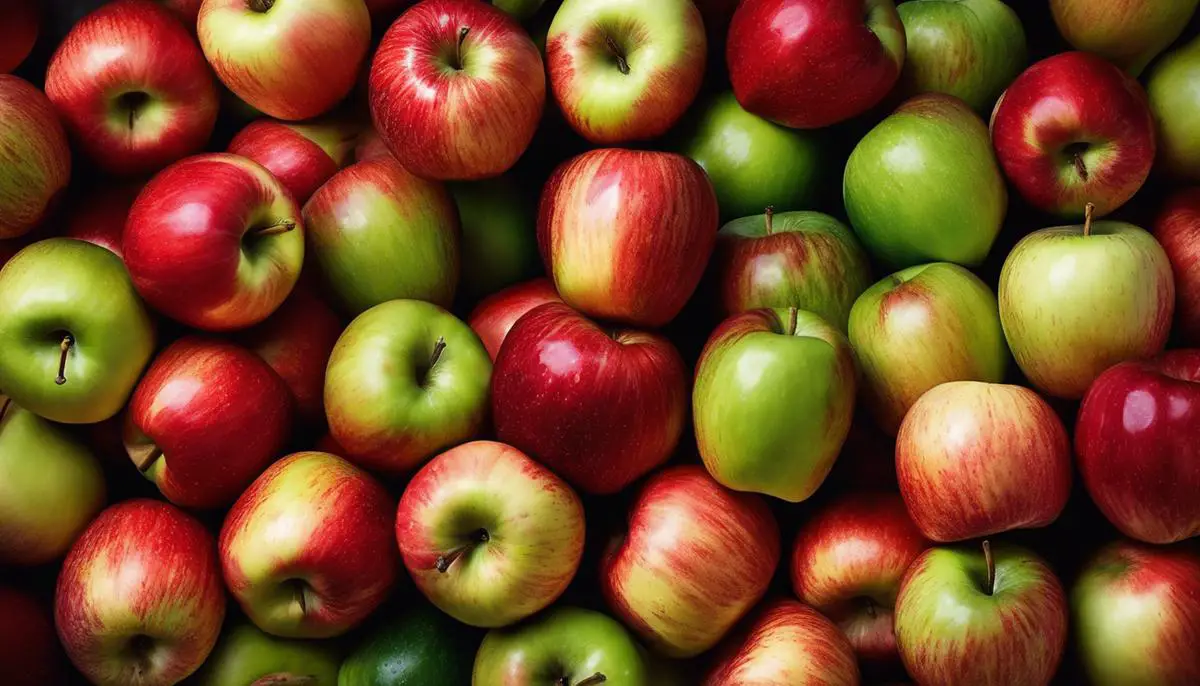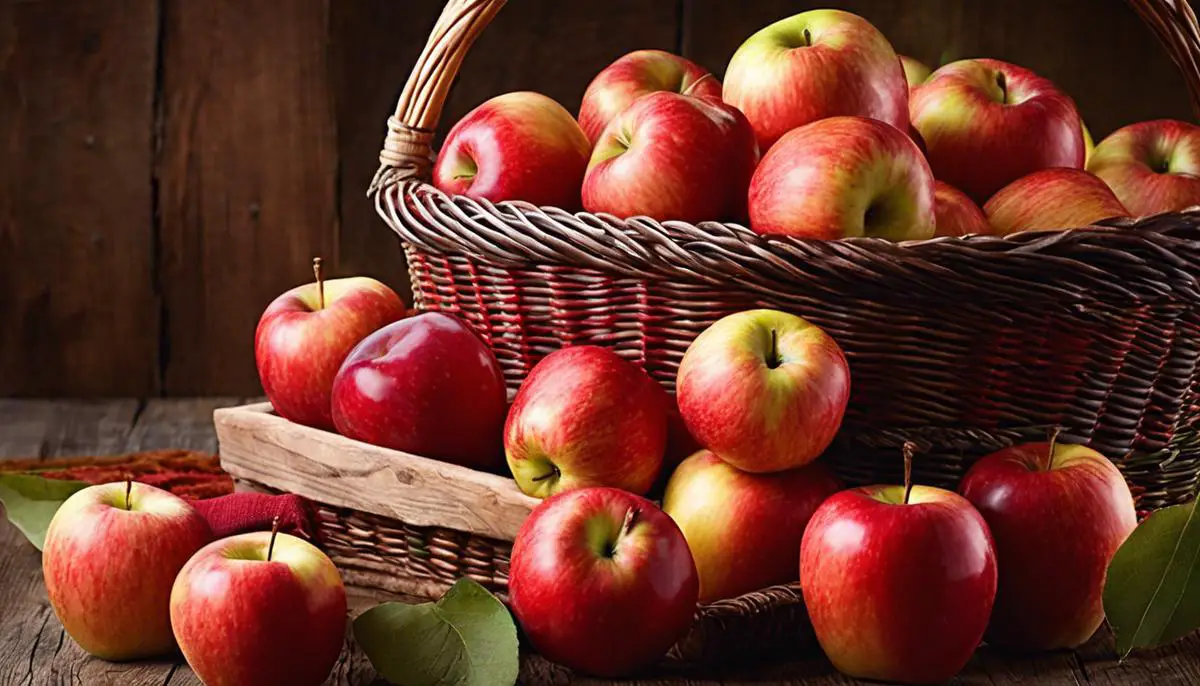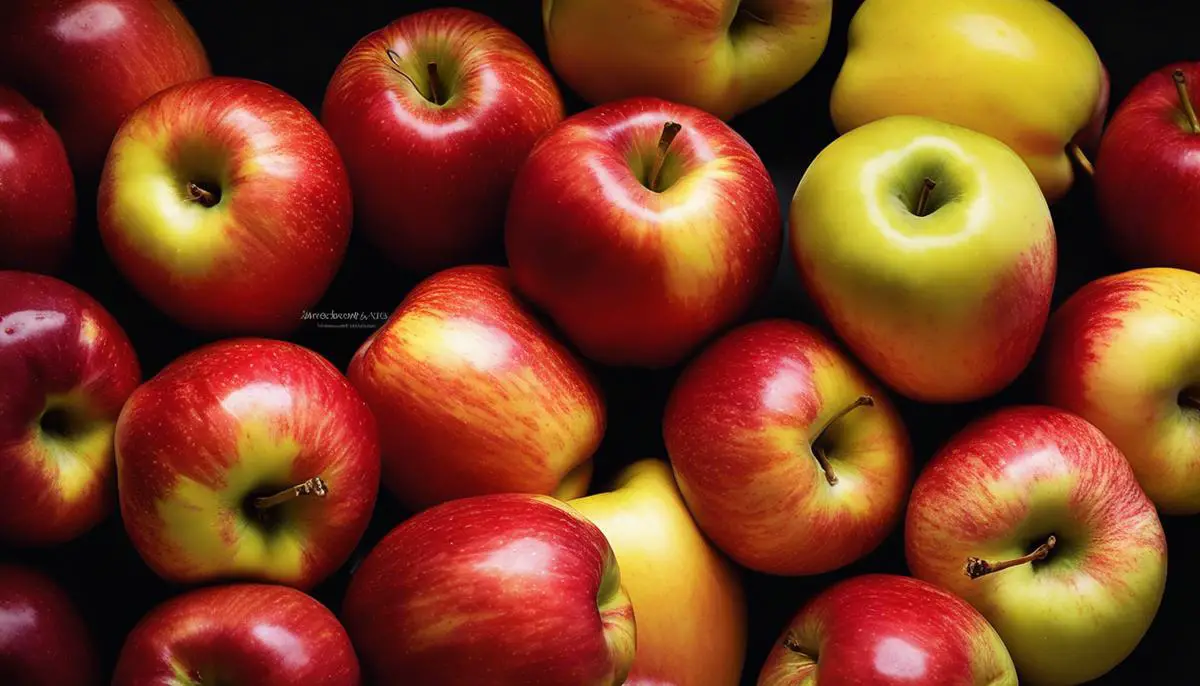Regarded with great admiration for its delightful taste, crisp texture, and juicy flesh, the Honeycrisp Apple continues to be celebrated as one of the most cherished fruit worldwide. Unearthed in the heart of Minnesota, this delightful variety of apple has made its way across distinct parts of North America, owing its growth to the conducive climates found in these regions. This narrative aims to guide readers on a journey across time and geography, exploring the tale of Honeycrisp Apples – where they began, where they flourish, how they’re nurtured, and their various applications. The following discourse offers insight into the origins and geographic spread of Honeycrisp Apples, discloses the secrets to their successful cultivation and care, and sheds light on their harvesting techniques and widespread uses.
Origins and Geographic Locations of Honeycrisp Apples
If you’re an apple enthusiast with a particular fondness for the tantalizingly sweet and crisp Honeycrisp, you might be curious about the origin of these delightful fruits. The birthplace of Honeycrisp apples can actually be traced to the University of Minnesota’s apple breeding program, where they were first cultivated in the year 1960. Their official cultivar name is ‘MN 1711’, denoting their roots in the University’s prestigious program. However, it wasn’t until three decades later, after meticulous tests and selection processes, that they were finally introduced to the public in 1991.
Today, Minnesota continues to top the charts as a leading region for Honeycrisp apple cultivation. That said, the resilient genetic makeup of this fruity marvel allows it to thrive in various geographies and climates. Other US states including Washington and Michigan have also joined the foray, producing luscious Honeycrisps for apple lovers nationwide. Worldwide, regions famed for apple farming such as New Zealand and Canada’s Nova Scotia have also welcomed Honeycrisp apples into their orchard repertoires, adding to the global pool of these succulent treats. The continued expansion of Honeycrisp cultivation showcases the universal appeal of this apple variety, perfectly blending sweetness, tartness, and a satisfying crunch that’s hard to resist.

Cultivation and Care of Honeycrisp Apples
Growing Honeycrisp Apples: A Horticulturist’s Diary
The cultivation of Honeycrisp apples is an endeavor that requires careful attention to ensure optimum growth. One basic element to foster flourishing apple trees is selecting a location that offers full sun exposure – a good six to eight hours a day. Honeycrisp apple trees thrive best in well-drained soil with a pH range between 6.0 to 7.0. Therefore, it’s critical to conduct a soil test prior to plantation to determine whether or not your garden soil needs any amendments.
As Honeycrisp apples blossom a bit later in spring compared to other apple varieties, these trees have an increased frost tolerance. However, they still require protection from harsh weather conditions, especially in their budding stage. Keep in mind that Honeycrisp apples are not self-pollinating. Therefore a second apple variety must be planted in proximity to ensure fruitful cross-pollination.
Coming to pruning, this technique allows sunlight and air to access all parts of the tree, thereby, maximizing fruit yield. Typically, the best time to prune Honeycrisp apple trees is during late winter or early spring prior to new growth. Also, regular applications of balanced fertilizers and timely pest-control measures keep the tree healthy and aid in optimum fruit production.
Pro tip: Honeycrisp apples are known for their superb storage capability. When kept in cold storage, the unique balance of sweetness and tartness intensifies, making them even more delicious.
Happy Gardening!

Harvesting and Uses of Honeycrisp Apples
Harvesting Honeycrisp apples is a splendid culmination of the apple grower’s year and certainly requires some keen understanding. So, let’s delve into the intricacies of the best time to harvest this delightful apple variant. It’s essential to consider that the Honeycrisp apple’s harvesting season largely depends on the climate of the region where they’re grown. However, they are typically ready for harvesting from late September through October. But how to know if the fruit is ready to pluck from the tree? Well, a general rule of thumb is to look at the apple’s base color. If it has transitioned from leafy green to creamy yellow, then it’s a green light. Furthermore, the fruit should come off easily when the stem is tilted upwards.
Besides, once you’ve gathered your Honeycrisp apples, it’s time to relish their uniquely delectable flavor and versatility. Many apple enthusiasts rave about their use in baking. Their consistency remains firm even when cooked, making them an excellent ingredient for commendable pies or tarts. Moreover, due to the robust blend of tartness and sweetness, Honeycrisp apples make delicious applesauce and can also be juiced. Interestingly, many cider makers adore Honeycrisp for adding a sweet yet tart kick to their cider blends. Aside from this, they can be added to salads or simply consumed raw due to the satisfying crunch they offer with each bite. It’s no wonder this apple variety is a perennial favorite across numerous cuisines and recipes!

Since its origin in Minnesota to its flourishing growth in various regions of North America, the journey of the Honeycrisp Apple is as vibrant as its enticing flavor. Its adaptability has been well-cultivated, thriving best in the nurturing care of dedicated growers. As with nurturing, harvesting the Honeycrisp Apple requires time and finesse, ensuring that the fruits of their labor can be enjoyed in its freshest form. However, the beauty of these apples doesn’t just lie in their immediate taste and texture, but extends to the varied uses they can be put to from baking pies to making applesauce, making the Honeycrisp Apple truly versatile. The savory journey of the Honeycrisp Apple extends far beyond its root – a testament to the efforts put into its cultivation, the climates where it thrives, and the delicious uses it offers to all those who relish its taste.